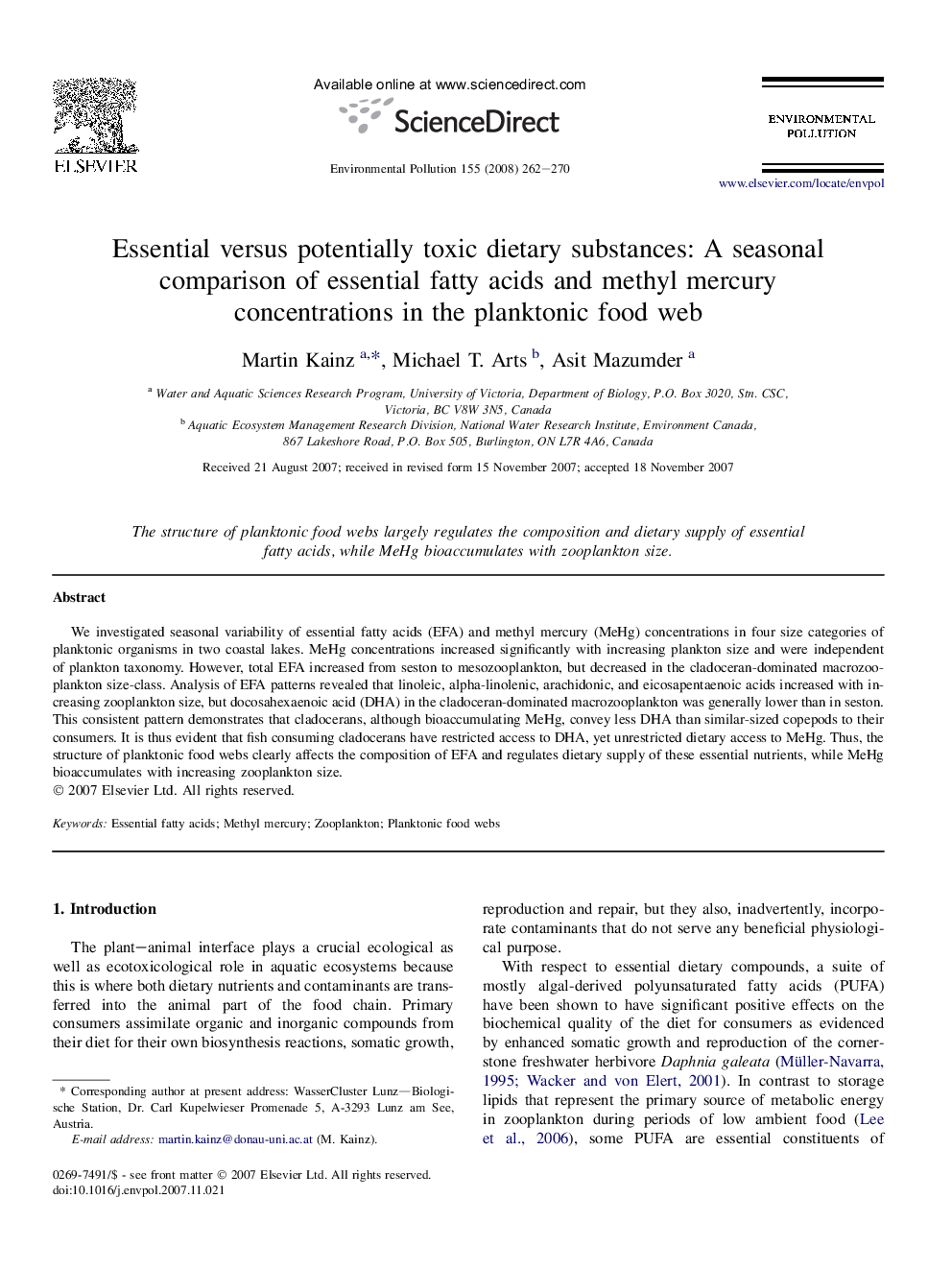| کد مقاله | کد نشریه | سال انتشار | مقاله انگلیسی | نسخه تمام متن |
|---|---|---|---|---|
| 4426488 | 1309127 | 2008 | 9 صفحه PDF | دانلود رایگان |

We investigated seasonal variability of essential fatty acids (EFA) and methyl mercury (MeHg) concentrations in four size categories of planktonic organisms in two coastal lakes. MeHg concentrations increased significantly with increasing plankton size and were independent of plankton taxonomy. However, total EFA increased from seston to mesozooplankton, but decreased in the cladoceran-dominated macrozooplankton size-class. Analysis of EFA patterns revealed that linoleic, alpha-linolenic, arachidonic, and eicosapentaenoic acids increased with increasing zooplankton size, but docosahexaenoic acid (DHA) in the cladoceran-dominated macrozooplankton was generally lower than in seston. This consistent pattern demonstrates that cladocerans, although bioaccumulating MeHg, convey less DHA than similar-sized copepods to their consumers. It is thus evident that fish consuming cladocerans have restricted access to DHA, yet unrestricted dietary access to MeHg. Thus, the structure of planktonic food webs clearly affects the composition of EFA and regulates dietary supply of these essential nutrients, while MeHg bioaccumulates with increasing zooplankton size.
Journal: Environmental Pollution - Volume 155, Issue 2, September 2008, Pages 262–270